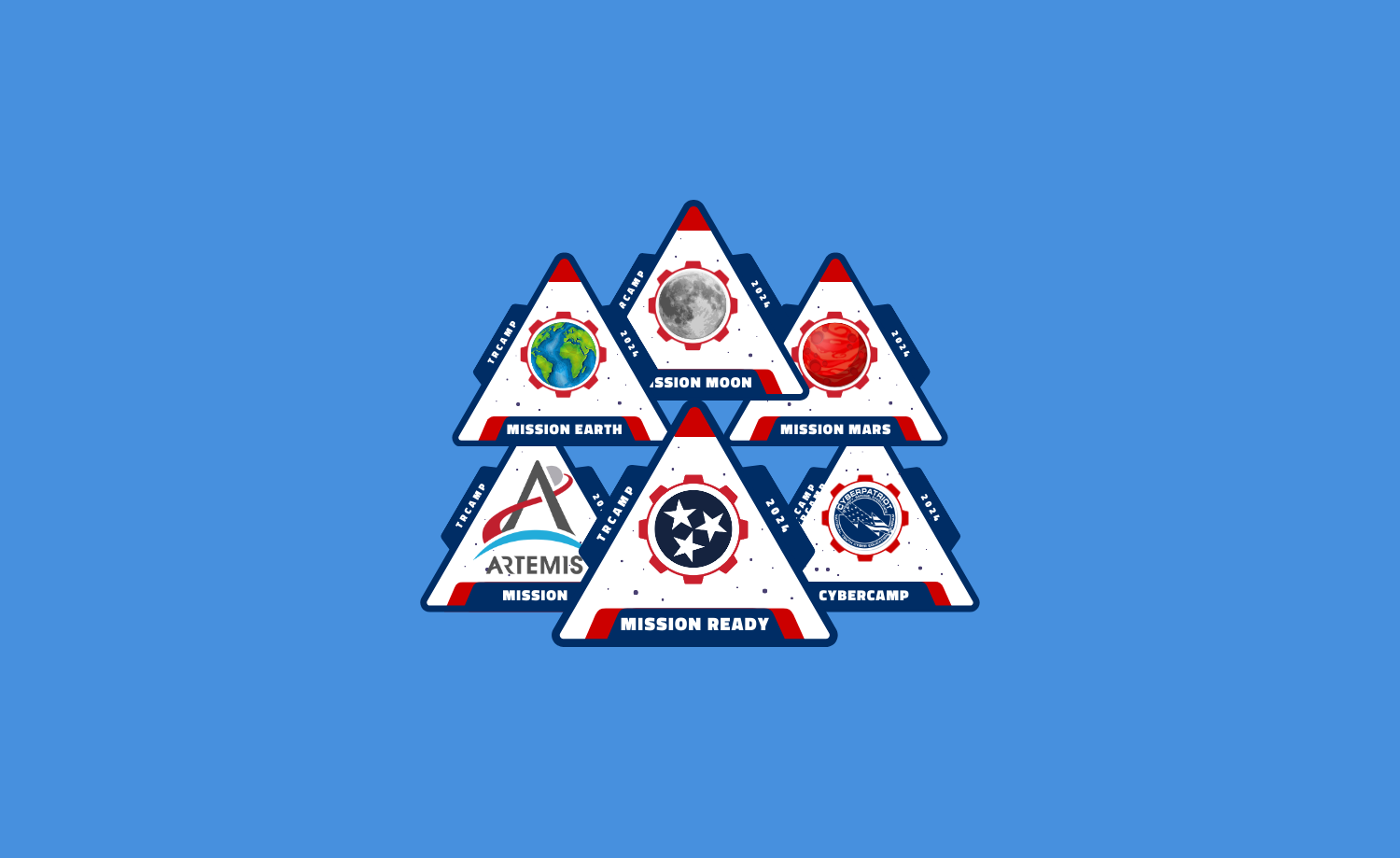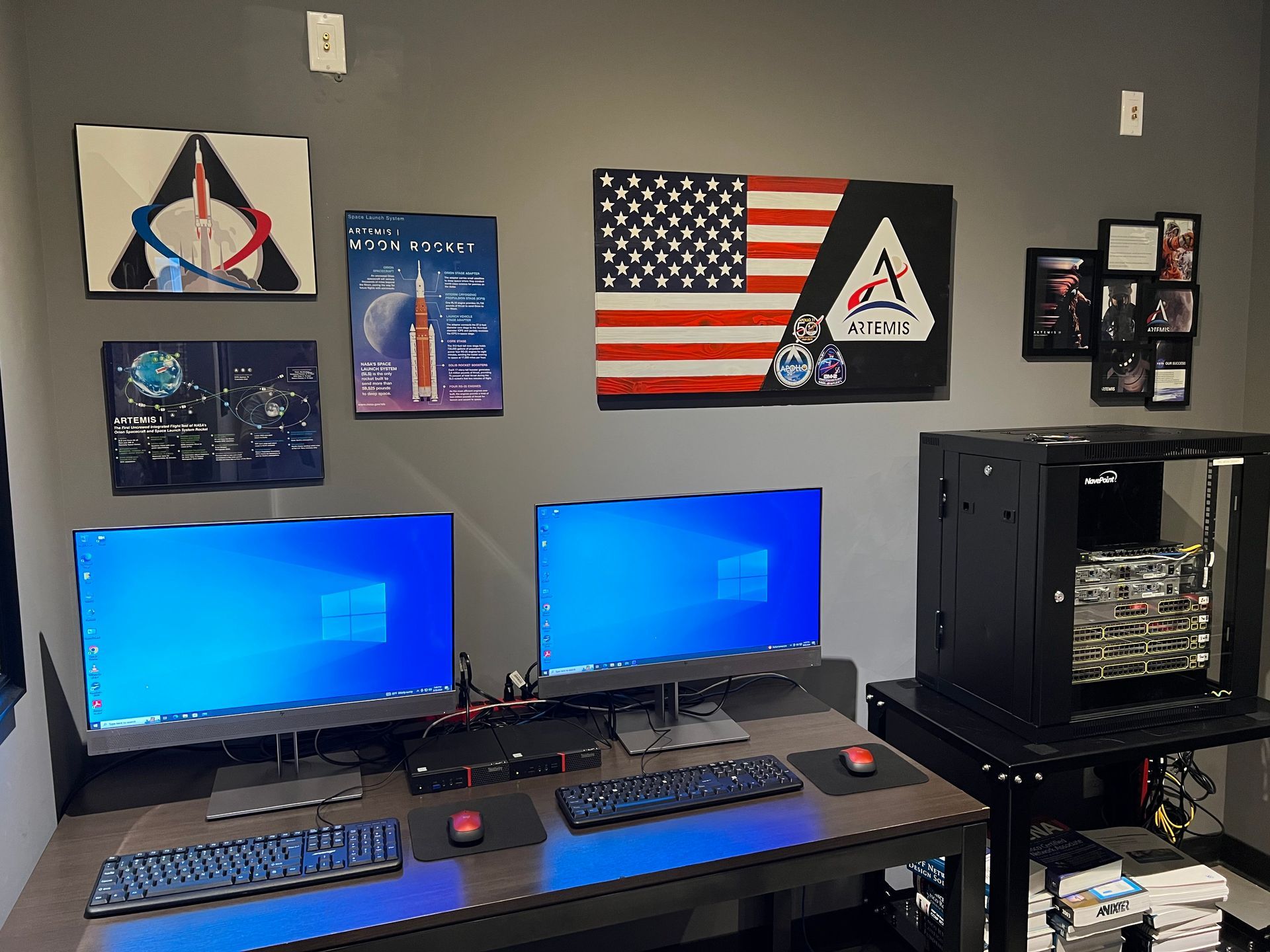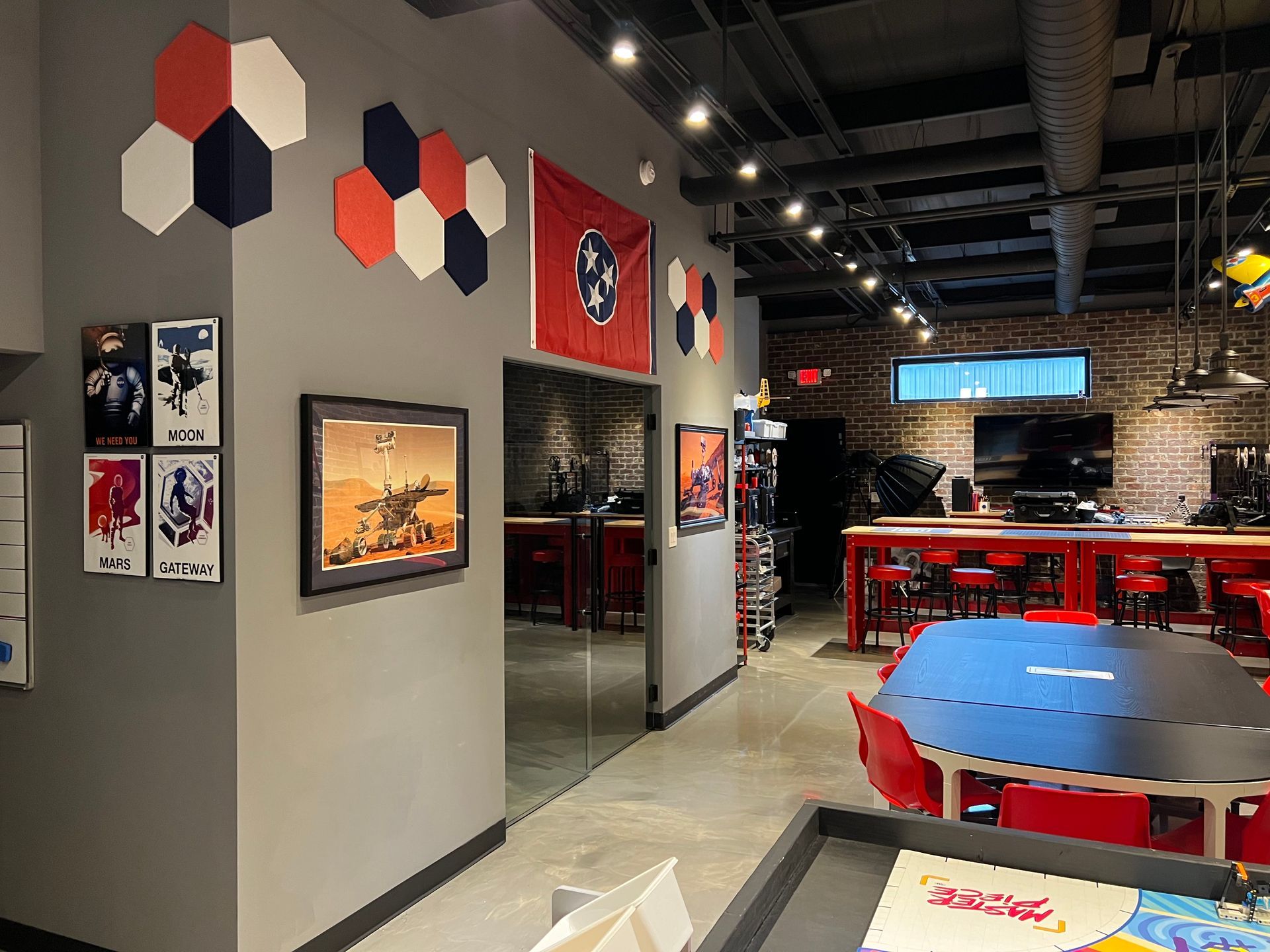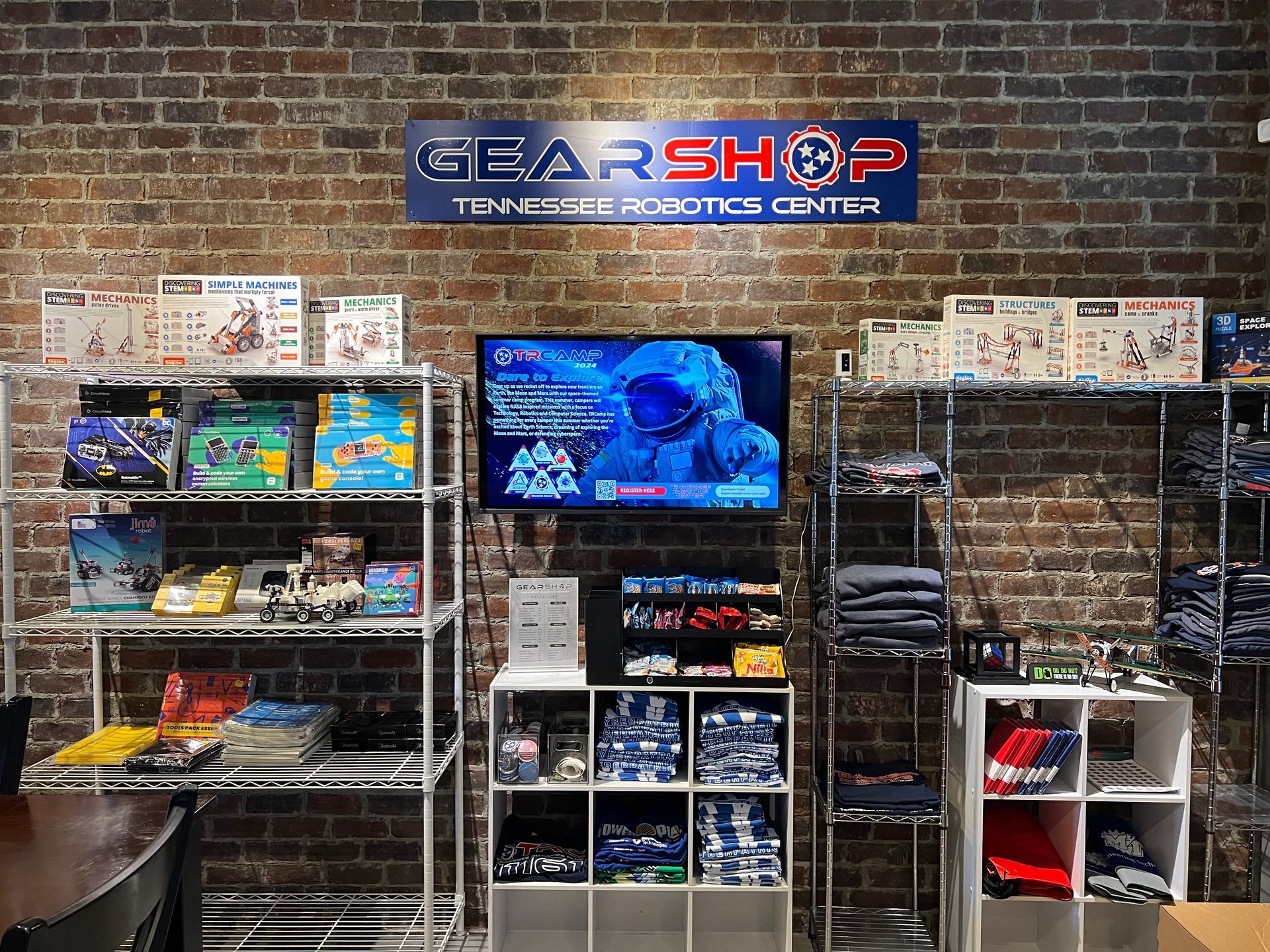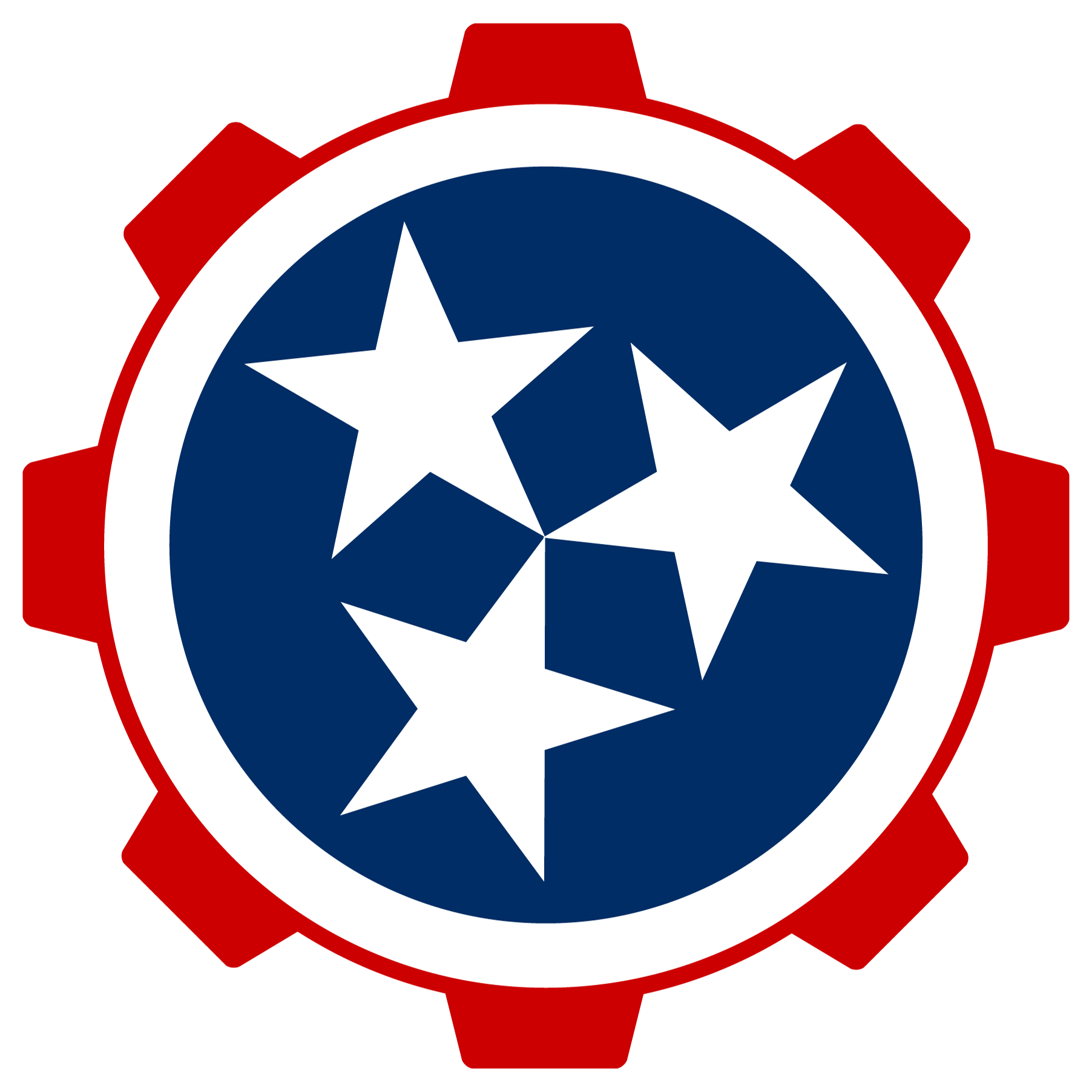
TRConstellation
Complete Course Descriptions and Key Learning Areas
"He determines the number of the stars and calls them each by name." ~Psalm 147:4
Discoverers mission
Grades K-2 | Ages 5-7
The Discoverers Mission launches our youngest engineers on an exciting journey of hands-on exploration and foundational STEM discovery. Through age-appropriate robotics, simple machines, and creative building challenges, students develop critical thinking skills while nurturing their natural curiosity about how things work. Each session combines playful learning with genuine engineering concepts, introducing basic programming through visual interfaces, exploring structures and materials, and fostering collaborative problem-solving. Young Discoverers earn their first mission badges as they master fundamental skills in spatial reasoning, pattern recognition, and scientific observation, setting the stage for a lifetime of innovation and technical confidence.
Robotics Discovery
Students embark on their first robotics adventure using LEGO WeDo and VEX 123 robots. Through play-based learning, young engineers discover how robots move, respond to commands, and solve simple challenges. This hands-on introduction builds foundational computational thinking and problem-solving skills in a fun, engaging environment.
Key Learning Areas:
- Robot navigation and movement
- Sequence and patterns
- Basic programming concepts
- Collaborative problem-solving
- Introduction to sensors
Engineering Discovery
Five pioneering engineering projects introduce students to the engineering design cycle. Young learners explore plant engineering, sound and music, structures, simple coding, and forensic science through fingerprint analysis. Each project builds understanding of how engineers ask questions, design solutions, and improve their creations.
Key Learning Areas:
- Engineering design process
- Plant science and biology
- Sound waves and music
- Structural engineering basics
- Scientific observation skills
Computer Science Discovery
Students discover the magic of coding through ScratchJr and block-based programming. This course introduces computational thinking concepts including sequencing, loops, and events through creative storytelling and interactive games. Young programmers learn that they can create their own digital worlds.
Key Learning Areas:
- Block-based coding fundamentals
- Sequencing and algorithms
- Creative digital storytelling
- Problem decomposition
- Interactive game design
Notes to Parents: Each TRConstellation course offers unique themes and varied approaches across our Winter, Spring, Summer, and Fall sessions, plus expanded Summer Camps for deeper exploration. Our 8-week sessions enable students to master core engineering objectives through diverse learning tools and rotating project themes that keep content engaging while reinforcing essential skills. By applying the same concepts through different real-world challenges—building Mars rovers, designing rescue robots, or creating automated solutions—students develop versatile problem-solving abilities and gain deep understanding of how engineering principles work across multiple contexts.
Explorers mission
Grades 3-5 | Ages 8-10
The Explorers Mission elevates students into intermediate engineering challenges where creativity meets technical precision. Students advance from basic building to designing functional mechanisms, programming autonomous robots, and conducting structured experiments that mirror real-world engineering processes. Through project-based learning spanning robotics, computer science, and mechanical engineering concepts, Explorers develop proficiency in block-based coding, basic CAD design fundamentals, and systematic problem-solving methodologies. As Explorers progress through increasingly complex challenges and earn specialized badges, students build the confidence to tackle open-ended problems and develop their unique engineering style while collaborating on team missions that prepare them for competitive LEGO robotics.
Robotics Exploration
Students build and program LEGO and VEX robots while mastering block-based programming. Through structured challenges, explorers learn about sensors, motors, gears, and decision-making in code. This course prepares students for more advanced robotics challenges and introduces competition concepts.
Key Learning Areas:
- LEGO/VEX robot construction
- Advanced block programming
- Sensor integration and use
- Mechanical advantage with gears
- Autonomous programming
Engineering Expeditions
Five comprehensive engineering projects guide students through complete design cycles. Explorers investigate optical engineering, marine engineering, bioengineering, environmental science, and amusement park engineering. Each expedition deepens understanding of the iterative design process and real-world engineering applications.
Key Learning Areas:
- Complete engineering design cycle
- Optics and light engineering
- Marine vessel design
- Biological systems
- Mechanical systems design
Computer Science Exploration
Students master Scratch programming while creating interactive games, animations, and stories. This course develops computational thinking through creative coding projects, teaching advanced concepts like variables, conditionals, and event-driven programming. Explorers learn to debug code and share their creations with others.
Key Learning Areas:
- Advanced Scratch programming
- Game design and development
- Variables and data
- Conditional logic
- Animation and storytelling
Engineering Design Process
Students learn systematic problem-solving using the complete engineering design cycle: Ask, Imagine, Plan, Create, Test, and Improve. Through hands-on projects, they practice identifying problems, brainstorming solutions, prototyping, testing, and iterating. This foundational course teaches the methodology used by professional engineers worldwide.
Key Learning Areas:
- 6-step design process mastery
- Problem identification and constraints
- Brainstorming and ideation
- Prototyping techniques
- Testing and iteration
3D Printing & Engineering Design
Students enter the world of digital manufacturing, learning to design and create physical objects using 3D printing technology. From simple designs to functional prototypes, students master basic CAD software and understand how digital files become real objects. Projects emphasize creative problem-solving and practical design.
Key Learning Areas:
- 3D design software basics
- Additive manufacturing principles
- Design for manufacturing
- File preparation and slicing
- Functional prototype creation
Notes to Parents: Each TRConstellation course offers unique themes and varied approaches across our Winter, Spring, Summer, and Fall sessions, plus expanded Summer Camps for deeper exploration. Our 8-week sessions enable students to master core engineering objectives through diverse learning tools and rotating project themes that keep content engaging while reinforcing essential skills. By applying the same concepts through different real-world challenges—building Mars rovers, designing rescue robots, or creating automated solutions—students develop versatile problem-solving abilities and gain deep understanding of how engineering principles work across multiple contexts.
challengers Mission
Grades 6-8 | Ages 11-13
The Challengers Missions transform middle school students into sophisticated problem-solvers ready to tackle advanced engineering concepts and FLL competition-level challenges. Students master block-based programming languages, design and fabricate custom components, and engage with industry-standard tools while exploring aerospace, mechanical, electrical, and software engineering. Through rigorous project cycles that emphasize the engineering design process, students develop technical documentation skills, learn failure analysis, and practice iterative improvement. This mission level prepares students for FTC robotics competitions, NASA challenges, and advanced STEM pathways while earning prestigious badges that recognize their growing expertise and leadership within the TRConstellation community.
Robotics Challenge
Students prepare for robotics competitions through advanced building techniques and programming strategies. Using competition-grade robots, challengers learn complex mechanisms, sensor fusion, and autonomous programming. This intensive course develops the skills needed for FLL and prepares students for future FTC competition.
Key Learning Areas:
- Competition robot design
- Advanced mechanisms and linkages
- Multi-sensor programming
- Strategy development
- Team collaboration
Engineering Pathways
Four advanced innovation projects challenge students to apply engineering principles to real-world problems. Pathways include reverse engineering, hydraulic systems, sustainable energy solutions, and civil engineering structures. Each project requires research, planning, prototyping, and presentation of solutions.
Key Learning Areas:
- Reverse engineering analysis
- Hydraulic and pneumatic systems
- Renewable energy engineering
- Structural engineering
- Technical documentation
Computer Science Challenge
Students transition from visual programming to text-based coding with Python fundamentals. Through engaging projects and challenges, they learn variables, functions, loops, and data structures. This course builds the foundation for advanced programming and prepares students for high school computer science.
Key Learning Areas:
- Python syntax and structure
- Functions and parameters
- Lists and data structures
- File input/output
- Project-based problem solving
ASTRO: Robotic Systems
Students design, build, and program their own mobile robot from scratch. Using Arduino microcontrollers, motors, and sensors, challengers create a functional autonomous robot. This hands-on course teaches electronics integration, mechanical design, and embedded programming in a complete robotics system.
Key Learning Areas:
- Arduino programming
- Motor control and drivers
- Sensor integration
- Chassis design and assembly
- Autonomous navigation
Electronics & Circuits
Students master electrical engineering fundamentals through hands-on circuit building. From basic circuits to complex systems with microcontrollers, students learn Ohm's Law, circuit design, component selection, and troubleshooting. Projects progress from simple LED circuits to programmable electronic systems.
Key Learning Areas:
- Circuit theory and Ohm's Law
- Series and parallel circuits
- Electronic components
- Breadboarding and soldering
- Microcontroller integration
Programming in Python
Students develop proficiency in Python, the world's most popular programming language. Through projects ranging from games to data analysis, students master object-oriented programming, file handling, and external libraries. This course prepares students for advanced computer science and real-world programming applications.
Key Learning Areas:
- Advanced Python syntax
- Object-oriented programming
- External libraries and modules
- Data structures and algorithms
- Real-world project development
Notes to Parents: Each TRConstellation course offers unique themes and varied approaches across our Winter, Spring, Summer, and Fall sessions, plus expanded Summer Camps for deeper exploration. Our 8-week sessions enable students to master core engineering objectives through diverse learning tools and rotating project themes that keep content engaging while reinforcing essential skills. By applying the same concepts through different real-world challenges—building Mars rovers, designing rescue robots, or creating automated solutions—students develop versatile problem-solving abilities and gain deep understanding of how engineering principles work across multiple contexts.
Specialists Mission
Grades 8-12 | Ages 14-18
The Specialists Mission offers dedicated students an intensive deep-dive into their chosen engineering discipline, allowing them to pursue focused mastery in Robotics, Computer Science, Aerospace, or Mechanical Engineering. This parallel track complements the core TRConstellation pathway by providing concentrated study in a single domain, with students completing advanced projects, industry certifications, and specialized challenges that go beyond the standard curriculum. Specialists work on extended research projects, collaborate with industry mentors, and develop portfolios that demonstrate professional-level competency in their chosen field. Through this mission, students earn distinctive specialist badges and credentials that signify their expertise, whether they're designing competitive robot systems, developing sophisticated software applications, or engineering aerospace solutions, positioning them as subject matter experts within the TRConstellation community and preparing them for specialized college programs and career pathways.
CAD Mastery: Fusion 360
Students master professional-grade CAD software used by engineers worldwide. From sketching and modeling to assemblies and simulations, students learn to design complex mechanical systems. Projects include creating parametric models, running stress simulations, and preparing designs for manufacturing.
Key Learning Areas:
- Parametric 3D modeling
- Assembly design and constraints
- Engineering drawings
- Finite element analysis (FEA)
- Design for manufacturing
Drones & UAVs
Students design, build, and program autonomous unmanned aerial vehicles. Learning flight dynamics, sensor fusion, and autonomous navigation, students create functional drones. The course covers aerodynamics, electronic speed controllers, flight controllers, and mission planning for real-world applications.
Key Learning Areas:
- Aerodynamics and flight principles
- Drone assembly and configuration
- Flight controller programming
- Autonomous waypoint navigation
- FPV systems and telemetry
Robotic Arms & Manufacturing
Students explore industrial automation through advanced robotic arm systems. Building on ASTRO Robotic Arms, this course introduces industrial robotics, including multi-axis control, teach pendants, and automated manufacturing processes. Students program arms for pick-and-place, assembly, and quality control tasks.
Key Learning Areas:
- Industrial robotics principles
- Multi-axis coordination
- Automation and manufacturing
- Vision systems integration
- Production optimization
Jet Engines & Propulsion
Students dive into aerospace propulsion, learning thermodynamics, fluid dynamics, and jet engine operation. Building functional jet engines and propulsion systems, students explore the physics behind rocket and jet propulsion. Projects include testing thrust, efficiency, and performance optimization.
Key Learning Areas:
- Thermodynamics fundamentals
- Jet engine components and operation
- Propulsion system design
- Thrust measurement and analysis
- Performance optimization
Aerodynamics & Race Car Engineering
Students design, test, and race high-performance vehicles using F1-level engineering principles. Learning aerodynamics, suspension geometry, and vehicle dynamics, students optimize designs for speed and handling. Wind tunnel testing, data analysis, and iterative design prepare students for engineering competitions.
Key Learning Areas:
- Aerodynamic principles and drag
- Chassis and suspension design
- Wind tunnel testing
- Data acquisition and telemetry
- Performance optimization
Notes to Parents: Each TRConstellation course offers unique themes and varied approaches across our Winter, Spring, Summer, and Fall sessions, plus expanded Summer Camps for deeper exploration. Our 8-week sessions enable students to master core engineering objectives through diverse learning tools and rotating project themes that keep content engaging while reinforcing essential skills. By applying the same concepts through different real-world challenges—building Mars rovers, designing rescue robots, or creating automated solutions—students develop versatile problem-solving abilities and gain deep understanding of how engineering principles work across multiple contexts.
Pathfinders Mission
Grades 9-12 | Ages 15-18
The elite Pathfinders Mission represents the pinnacle of our TRConstellation program, where high school students engage in high school level engineering projects and real-world applications. These advanced engineering students tackle complex multidisciplinary challenges, from designing autonomous systems to aerospace engineering projects aligned with NASA and other program initiatives. Pathfinders master text-based programming languages, advanced CAD and simulation tools, and project management methodologies while leading younger students as TRC Mentors and role models. Pathfinders demonstrate exceptional technical mastery, innovation, and leadership, preparing them for top engineering programs, prestigious scholarships, and launching careers that will shape tomorrow's technology landscape.
Robotics Engineering 1 & 2
Students join a competitive FTC robotics team, designing and building a complete competition robot. Over two semesters, teams master mechanical design, electronics integration, Java programming, and competition strategy. Students develop professional engineering notebooks, present to judges, and compete at the highest level. This comprehensive program prepares students for collegiate engineering and FRC.
Key Learning Areas:
- REV Robotics system mastery
- Java programming for FTC
- Competition strategy and game analysis
- Professional documentation
- Team leadership and collaboration
- Outreach and community engagement
Aerospace Engineering 1 & 2
Students design, build, and launch high-powered rockets, preparing for NASA Student Launch competition. This rigorous program covers rocket propulsion, stability analysis, recovery systems, and payload integration. Teams conduct research, perform simulations, fabricate components, and execute successful launches while maintaining detailed technical documentation.
Key Learning Areas:
- Rocket design and stability
- Propulsion systems and motors
- Recovery system engineering
- Payload design and integration
- Launch operations and safety
- Flight simulation and analysis
Aeronautical Engineering 1 & 2
Students design and build remote-controlled aircraft for SAE Aero Design competition. Teams apply aerodynamic theory, structural analysis, and flight testing to create high-performance aircraft. The year-long program includes design iterations, prototype testing, manufacturing, and competition preparation. Students gain real-world aerospace engineering experience.
Key Learning Areas:
- Aircraft design and aerodynamics
- Wing and airfoil design
- Structural analysis and materials
- Flight testing and data collection
- Manufacturing techniques
- Competition preparation
Computer Engineering 1 & 2
Students master the intersection of hardware and software through embedded systems development. Building IoT devices, robotics systems, and intelligent machines, students integrate sensors, actuators, and edge AI. Projects include designing custom PCBs, implementing real-time operating systems, and deploying machine learning models on embedded hardware.
Key Learning Areas:
- Embedded systems programming
- IoT architecture and protocols
- PCB design and fabrication
- Real-time operating systems
- Edge AI and machine learning
- System integration and testing
Mechatronics Engineering 1 & 2
Students integrate mechanical, electrical, and software engineering to create intelligent automated systems. This comprehensive program combines robotics, control systems, sensors, actuators, and programming to design and build complex mechatronic devices. Projects include automated manufacturing cells, smart machines, and advanced robotic systems that respond intelligently to their environment.
Key Learning Areas:
- Multi-disciplinary system design
- Control systems and PID tuning
- Sensor fusion and data integration
- Actuator selection and control
- Computer vision and machine learning
- Automated manufacturing systems
- System modeling and simulation
- Professional documentation and presentation
Product Design Engineering 1 & 2
Students master the complete product development lifecycle from user research and ideation through CAD modeling, prototyping, testing, and manufacturing. Building 12 complete consumer products over two semesters, students learn human-centered design thinking, advanced Fusion 360 skills, multi-material prototyping, design for manufacturing, user testing methodologies, and professional portfolio development. The program culminates in an independent capstone product with investor pitch.
Key Learning Areas:
- Design thinking and user research
- Advanced CAD (Fusion 360 for products)
- Rapid prototyping (3D print, laser cut, fabrication)
- User testing and iteration
- Design for manufacturing principles
- Portfolio development and pitch skills
Notes to Parents: Each TRConstellation course offers unique themes and varied approaches across our Winter, Spring, Summer, and Fall sessions, plus expanded Summer Camps for deeper exploration. Our 8-week sessions enable students to master core engineering objectives through diverse learning tools and rotating project themes that keep content engaging while reinforcing essential skills. By applying the same concepts through different real-world challenges—building Mars rovers, designing rescue robots, or creating automated solutions—students develop versatile problem-solving abilities and gain deep understanding of how engineering principles work across multiple contexts.
